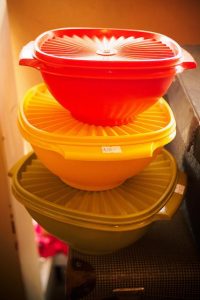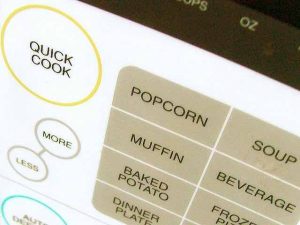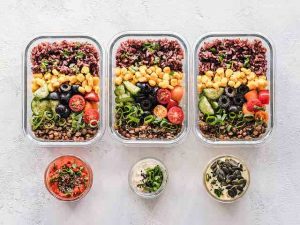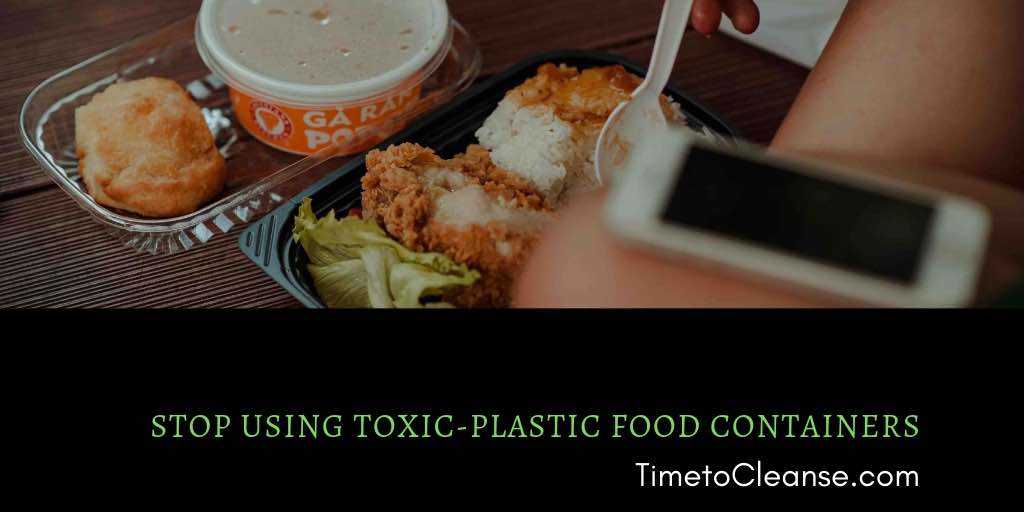We use plastic, whether in the form of plastic bags, water bottles, storage containers, or fast food boxes on a daily basis. They are convenient and affordable – but at what cost to our health and the health of the planet? Plastics are loaded with harmful toxic chemicals that leach into our bodies, soil, water sources, and into the air causing serious health problems.
In addition, plastics don’t go away. Single-use plastic items, such as straws, plastic cups, bags, water bottles, etc. are thought to remain in the environment for a couple of thousand years! Our oceans are becoming crammed full of disposable plastics, sea life is dying from ingesting plastic in their environment, and yet we as humans, keep purchasing these items and mindlessly throwing them away!
So, we understand that plastics are harmful to the environment and polluting our planet, but let’s take a look at how plastics affect our bodies. From the manufacturing of plastic to our unknowingly ingesting the chemicals found in them, we need to be aware of how seriously harmful plastics are. Fortunately, there are alternatives. And the more we know and understand the harmful effects of plastics for our health, the more passionate we will become about using alternative sources.
Quiz: Is Your Body TOXIC? Take the Test...
(get your free personalized report)
To-Go Food Boxes
It is so easy to run into a restaurant or store that serves piping hot food that you simply scoop into a container, pay for it and dash out to quickly eat it in your car or at your office desk. But, do you know what those containers are made from and how they may be impacting your health? There are many types of to-go food containers, so let’s look at the most common ones and see what they are made from.
Styrofoam Food Containers
 Many cities and states have already banned the use of styrofoam, but it is still prevalent in many areas as the preferred choice of to-go boxes. What the heck is it made from anyway? Styrofoam is a brand name for expanded polystyrene (EPS). ESP is plastic that has been expanded with air – up to 95% air – and is used as insulation for hot food and beverages, as well as for packaging materials. Due to its lightness and buoyancy, styrofoam gets blown about by the wind, and travels easily down waterways and into the oceans. Styrofoam litters the streets and beaches, and animals choke and die on this nasty stuff. And, it cannot be recycled, according to New York City’s Department of Sanitation.
Many cities and states have already banned the use of styrofoam, but it is still prevalent in many areas as the preferred choice of to-go boxes. What the heck is it made from anyway? Styrofoam is a brand name for expanded polystyrene (EPS). ESP is plastic that has been expanded with air – up to 95% air – and is used as insulation for hot food and beverages, as well as for packaging materials. Due to its lightness and buoyancy, styrofoam gets blown about by the wind, and travels easily down waterways and into the oceans. Styrofoam litters the streets and beaches, and animals choke and die on this nasty stuff. And, it cannot be recycled, according to New York City’s Department of Sanitation.
Styrofoam contains a chemical called styrene, (a component of polystyrene) and this harmful chemical leaches into hot foods and drinks that it comes in contact with. According to the National Academies of Sciences, Engineering, and Medicine, styrene is “reasonably anticipated to be a human carcinogen.” Their study observed DNA damage in human cells that were exposed to styrene which can cause major havoc within the bodies systems.
Lined Cardboard To-Go Boxes
 You head over to the salad bar section of your grocery store and fill the cardboard looking box with vegetables and lean protein and add a bit of olive oil and lemon to make for a healthy lunch. Unfortunately, many cardboard boxes and molded “natural” looking bowls and plates are coated with perfluoroalkyl substances (PFAS) which is a Teflon, non-stick coating. This is a perfluorinated chemical is oil and water resistant and is used for take away boxes, like for salad bars, hot food bars, and pizza boxes. This chemical is leaching into your food.
You head over to the salad bar section of your grocery store and fill the cardboard looking box with vegetables and lean protein and add a bit of olive oil and lemon to make for a healthy lunch. Unfortunately, many cardboard boxes and molded “natural” looking bowls and plates are coated with perfluoroalkyl substances (PFAS) which is a Teflon, non-stick coating. This is a perfluorinated chemical is oil and water resistant and is used for take away boxes, like for salad bars, hot food bars, and pizza boxes. This chemical is leaching into your food.
PFAS is also used as coatings for non-stick cookware. According to the Agency for Toxic Substances and Disease Registry (ATSDR), the Center for Disease Control (CDC) and the National Center for Environmental Health (NCEH), perfluoroalkyl substances are a major public health concern. This group of chemicals disrupt women’s hormones and can lower a woman’s chance of getting pregnant. In children. PFAS’s can affect their growth and learning capabilities. The studies show that these chemicals lower the immune system and have the probability of increasing the chance for cancers.
Quiz: Is Your Body TOXIC? Take the Test...
(personalized report)
Plastic Food and Beverage Containers
 Many of the containers that you use to take away foods are made with hardened plastic. This helps to give the plastic rigidity and strength. However, in order to make the containers strong, a chemical called Biphenyl (BPA) is used. There is a lot of information about BPA’s and how it affects human health, but in general avoid, plastic water bottles, hardened plastic food containers, infant water bottles. BPA’s disrupt the endocrine system that imitates the hormone estrogen. Endocrine disrupters interfere with the reproductive system, the ability to use insulin as well as causing problems with metabolism.
Many of the containers that you use to take away foods are made with hardened plastic. This helps to give the plastic rigidity and strength. However, in order to make the containers strong, a chemical called Biphenyl (BPA) is used. There is a lot of information about BPA’s and how it affects human health, but in general avoid, plastic water bottles, hardened plastic food containers, infant water bottles. BPA’s disrupt the endocrine system that imitates the hormone estrogen. Endocrine disrupters interfere with the reproductive system, the ability to use insulin as well as causing problems with metabolism.
You will find water bottles that have BPA’s in them that are marked with a #7 recycling code. Avoid drinking from these or if you see food storage containers with this code, avoid them as well. You can read more about the dangers of BPA here as well as hidden sources of BPA that may surprise you.
Microwaving in Plastic Containers and Plastic Wrap
 Let’s say that you have brought home leftovers in a plastic or styrofoam container and you are in a rush for lunch. You pop the container onto the microwave, hit re-heat and in just a few minutes you have a hot lunch in a ready to eat container. Yikes!
Let’s say that you have brought home leftovers in a plastic or styrofoam container and you are in a rush for lunch. You pop the container onto the microwave, hit re-heat and in just a few minutes you have a hot lunch in a ready to eat container. Yikes!
Microwaving foods in plastic based containers leaches the chemicals into your food where you may be ingesting BPA’s, styrenes, and phthalates. Phthalates are a chemical used to soften plastic and are found in plastic containers, such as yogurt and margarine tubs as well as plastic wrap. Phthalates are also known as endocrine disrupters and should be avoided as much as possible.
Alternatives to Plastic Food Storage and To-Go Containers
 Say no to plastic food containers today! Plan ahead and bring your own reusable stainless steel travel mug for your take away coffee. When you go to a restaurant and you anticipate that you will be bringing home leftovers, be sure and bring a sealable glass container with you.
Say no to plastic food containers today! Plan ahead and bring your own reusable stainless steel travel mug for your take away coffee. When you go to a restaurant and you anticipate that you will be bringing home leftovers, be sure and bring a sealable glass container with you.
Don’t use vending machines that use foam cups and if you like hot instant soups, opt for ones that use cardboard instead. And certainly, don’t microwave any foods that are made with styrene! When you are throwing a party, don’t use throw-away styrofoam cups, bowls, and plates.
Invest in reusable bamboo or even ceramics. So what if you have to wash them! They are healthier and more enjoyable to eat off of. Along with your travel mug and reusable containers, carry bamboo or stainless steel cutlery with you to avoid single-use knives, forks, and spoons. As many states and cities have bans in place for the use of single-use plastic, such as straws and cutlery. Invest in stainless steel straws that you can always have with you.
Free yourself from relying on plastic food containers. Invest in glass containers, bamboo, stainless steel, and good old-fashioned ceramics for food storage. And if you feel like your body is burdened with harmful chemicals and you want to boost your metabolism, try a 9-Day Isagenix Cleanse. You will feel light and refreshed and motivated to continue your path to clean living!

